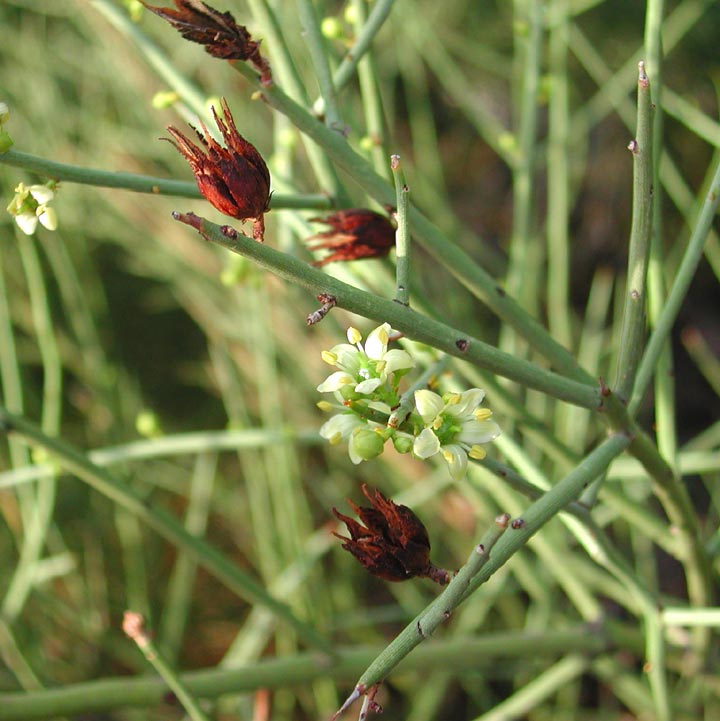
|
Family: Celastraceae |
PLANTS: Essentially glabrous shrubs or small trees with numerous, naked, pale green branches that usually end in stout thorns; twigs with minute parallel longitudinal grooves, these adorned by minute white epidermal wax dots; vicinities of both bud and leaf scale scars rough, black, glandular (red and crystalline on fresh spring growth). LEAVES: represented merely by a few alternate, widely spaced, soon deciduous, deltoid scales 1-2 mm long; stipules apparently absent. INFLORESCENCE: cymes short, few-flowered, axillary, often several arising together from a single leaf axil; bracts numerous, minute, deltoid. FLOWERS: perfect; calyx lobes 5, imbricate in bud, brown, deltoid, small; petals 5, longer than the calyx lobes; stamens 5, tending to persist at base of fruit; pistil of (3-)5 carpels on a short, thick gynophore, the style 2-3 mm long, with 5 erect, deltoid, adaxially stigmatic apical lobes. CAPSULES: oblong, externally fleshy at first, later drying over an internal woody layer, persistent for a year or more, dark brown or blackish, with the (3-)5 carpels splitting apically into 2 subulate beaks for about 1/3 of the capsule's length. SEEDS: 1(-2) per locule, hard, brownish, oval to oblong, strongly compressed laterally, membranously winged below. NOTES: 2 spp., 1 in AZ; se CA, s UT; Son., Chih., Mex. (A nineteenth century Mexican name for the plants.) REFERENCES: Brasher, Jeffrey W. 1998. Celastraceae J. Ariz. - Nev. Acad. Sci. 30(2): 57. |
This project was made possible in part by the Institute of Museum and Library Services [MG-70-19-0057-19].
Powered by Symbiota



